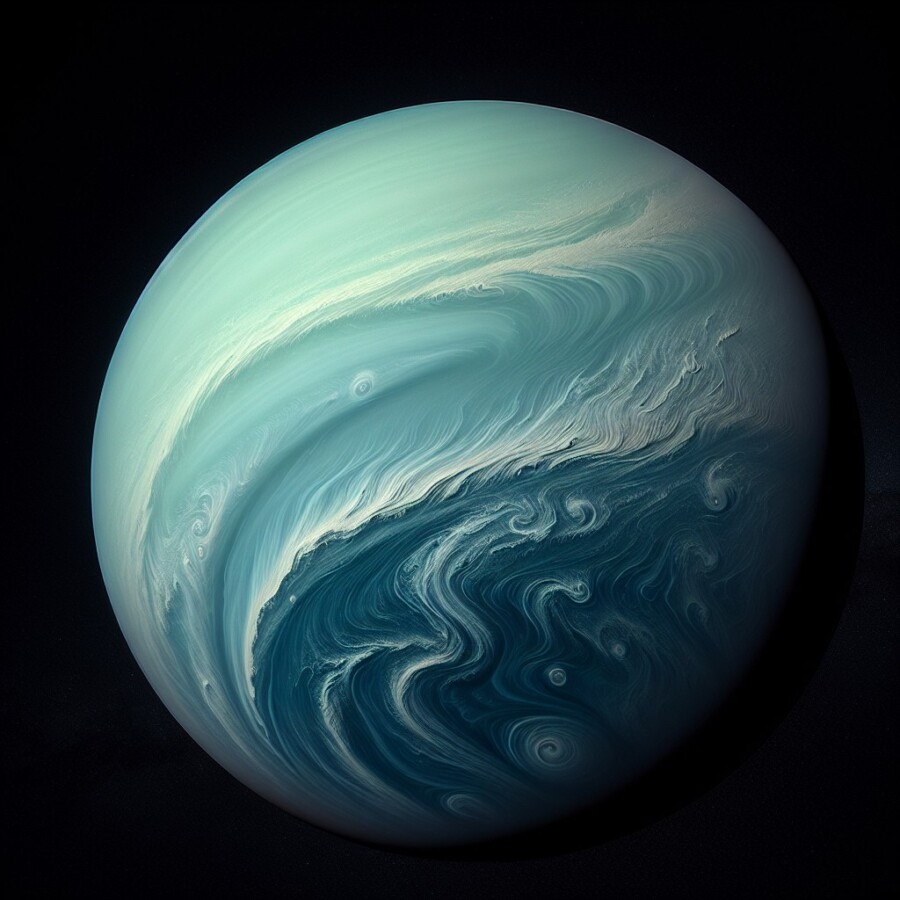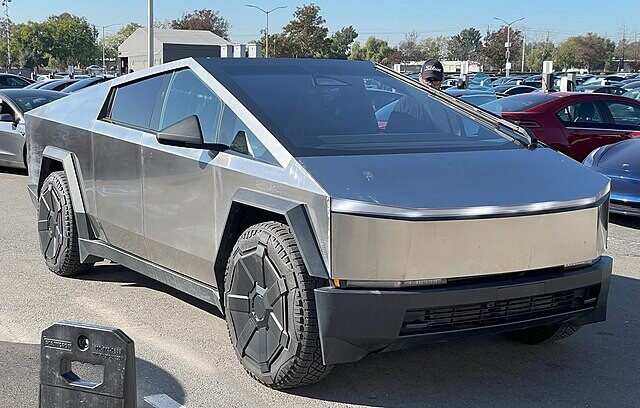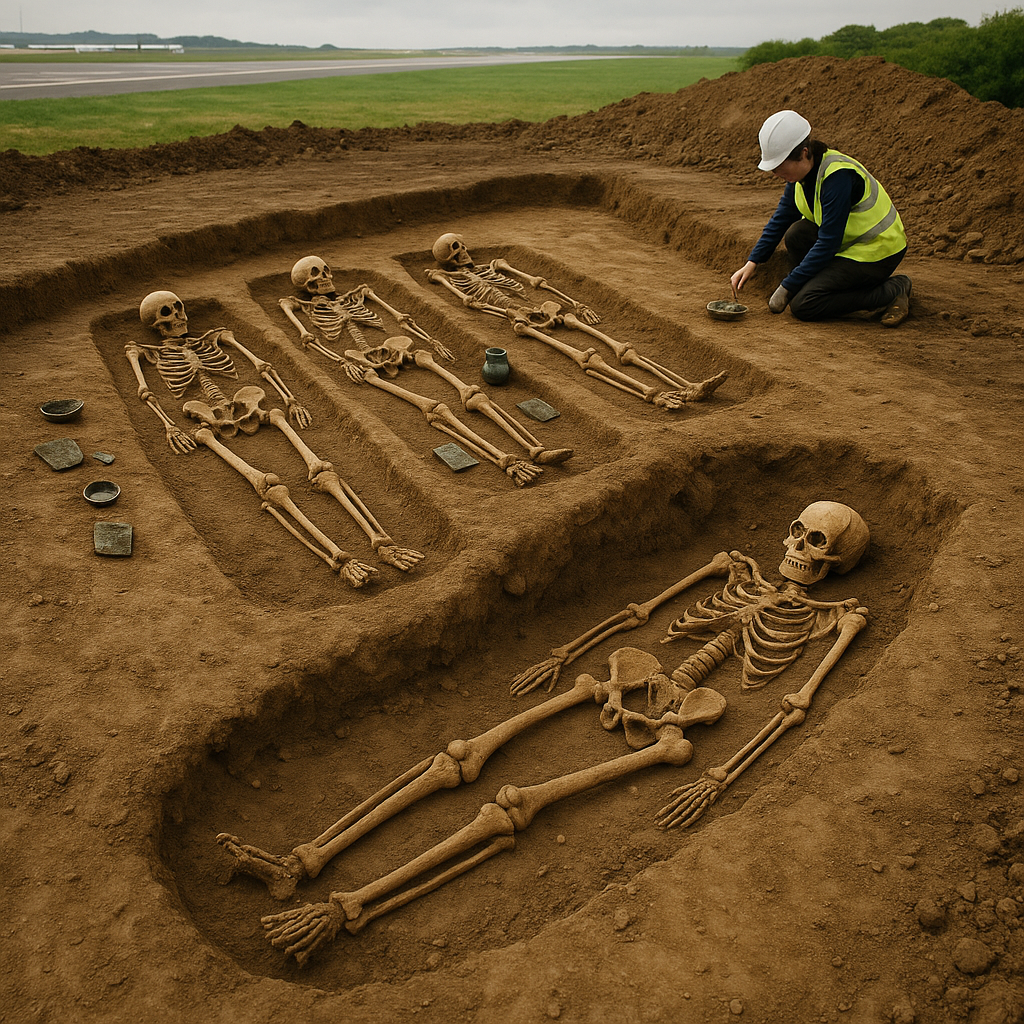Scientists found out that the colors we thought Neptune and Uranus had were not right. Long ago, pictures from space made Neptune look deep blue and Uranus look green. But now, they say both planets are really more like a mix of green and blue. The old pictures were changed to help scientists see clouds and other things in the sky, which made the colors look different.
For a long time, people who study space knew that the pictures of Neptune and Uranus were not showing their real colors. The bright colors in the old pictures were made stronger on purpose. This is something scientists do often to see things better in space. The new study worked with old pictures to show us what the planets really look like, and they are both a kind of greenish blue.
The study also found that Neptune looks a little more blue because it has less cloudy stuff in its sky. Uranus looks more green when it is summer or winter there, and more blue when it is spring or fall. This new information about the planets’ colors was shared in a science magazine. It helps us understand what Neptune and Uranus are really like.
Original news source: Neptune and Uranus seen in true colours for first time (BBC)
🎧 Listen:
Slow
Normal
Fast
📖 Vocabulary:
| 1 | Neptune | A faraway planet that is the eighth one from the sun |
| 2 | Uranus | Another faraway planet, the seventh one from the sun |
| 3 | scientists | People who work to learn new things about the world |
| 4 | pictures | Images that show what something looks like |
| 5 | space | The area beyond Earth where stars and planets are |
| 6 | clouds | White or gray things in the sky that can bring rain or snow |
| 7 | study | Research or a project to learn more about something |
| 8 | greenish | A color that is a little bit green |
| 9 | cloudy | Full of things that can make the sky look not clear |
| 10 | summer | The hottest season of the year |
| 11 | winter | The coldest season of the year |
| 12 | magazine | A book with articles and pictures that comes out regularly |
Group or Classroom Activities
Warm-up Activities:
– News Summary
Instructions: Divide the class into pairs. Have each pair read the article together and then summarize the main points in their own words. After a few minutes, ask some pairs to share their summaries with the class.
– Vocabulary Pictionary
Instructions: Write down vocabulary words from the article on small pieces of paper and put them in a hat. Divide the class into teams. One person from each team picks a word from the hat and has to draw it on the board without using any letters or numbers. The team members have to guess the word within a certain time limit. The team that guesses the most words correctly wins.
– Opinion Poll
Instructions: Create a short survey based on the article. Ask the students to walk around the class and ask their classmates the questions from the survey. After everyone has collected their data, have a class discussion where students share their findings and opinions.
– Pros and Cons
Instructions: Divide the class into two groups. Assign one group to list the pros of changing the colors of Neptune and Uranus in the pictures, and assign the other group to list the cons. After a few minutes, have each group share their lists with the class and facilitate a discussion about the different viewpoints.
– Future Predictions
Instructions: Ask the students to imagine that they are scientists studying space. In pairs or small groups, have them discuss and make predictions about what other surprising discoveries they might make in the future about the colors or appearances of other planets. After a few minutes, have some groups share their predictions with the class.
🤔 Comprehension Questions:
1. What did scientists find out about the colors of Neptune and Uranus?
2. Why did the old pictures of Neptune and Uranus look different from their real colors?
3. Why did scientists change the old pictures of Neptune and Uranus?
4. What did the new study show about the real colors of Neptune and Uranus?
5. Why does Neptune look more blue than Uranus?
6. When does Uranus look more green and when does it look more blue?
7. Where was the new information about the planets’ colors shared?
Go to answers ⇩
🎧✍️ Listen and Fill in the Gaps:
Scientists found out that the colors we thought (1)______ and Uranus had were not (2)______. Long ago, pictures from space made Neptune look deep blue and Uranus look (3)______. But now, they say both planets are really more like a mix of green and blue. The old pictures were changed to help scientists see (4)______ and other things in the sky, which made the (5)______ look different.
For a long time, people who study (6)______ knew that the pictures of Neptune and Uranus were not showing their real colors. The bright colors in the old pictures were made stronger on purpose. This is something scientists do often to see (7)______ better in space. The new (8)______ worked with old pictures to show us what the planets really look like, and they are both a kind of greenish blue.
The study also (9)______ that Neptune looks a little more blue because it has less cloudy stuff in its sky. Uranus looks more green when it is summer or winter there, and more (10)______ when it is spring or fall. This new information about the planets’ colors was shared in a (11)______ magazine. It (12)______ us understand what Neptune and Uranus are really like.
Go to answers ⇩
💬 Discussion Questions:
Students can ask a partner these questions, or discuss them as a group.
1. What are Neptune and Uranus?
2. How would you feel if you found out that the colors of Neptune and Uranus were not what you thought?
3. Do you like looking at pictures of space? Why or why not?
4. What do scientists do to make things in space easier to see?
5. How do the colors of Neptune and Uranus look now?
6. What did the old pictures of Neptune and Uranus show?
7. Why do you think the scientists changed the colors in the old pictures?
8. How does Neptune look different from Uranus?
9. Why does Uranus look more green in summer or winter?
10. Have you ever seen a picture of Neptune or Uranus? What did it look like?
11. Do you think it’s important to study space? Why or why not?
12. What did the new study about Neptune and Uranus teach us?
Individual Activities
📖💭 Vocabulary Meanings:
Match each word to its meaning.
Words:
1. Neptune
2. Uranus
3. scientists
4. pictures
5. space
6. clouds
7. study
8. greenish
9. cloudy
10. summer
11. winter
12. magazine
Meanings:
(A) Images that show what something looks like
(B) A book with articles and pictures that comes out regularly
(C) Another faraway planet, the seventh one from the sun
(D) The area beyond Earth where stars and planets are
(E) Full of things that can make the sky look not clear
(F) A color that is a little bit green
(G) A faraway planet that is the eighth one from the sun
(H) People who work to learn new things about the world
(I) White or gray things in the sky that can bring rain or snow
(J) The coldest season of the year
(K) Research or a project to learn more about something
(L) The hottest season of the year
Go to answers ⇩
🔡 Multiple Choice Questions:
1. What did scientists find out about the colors of Neptune and Uranus?
(a) The colors we thought they had were correct.
(b) The colors we thought they had were not right.
(c) The colors changed because of the clouds in their sky.
(d) The colors changed because of the pictures from space.
2. Why were the old pictures of Neptune and Uranus changed?
(a) To make the planets look brighter and more colorful.
(b) To make the planets look more like Earth.
(c) To help scientists see clouds and other things in the sky.
(d) To show the real colors of the planets.
3. What did scientists do to the old pictures of Neptune and Uranus?
(a) Made the colors look more like a mix of green and blue.
(b) Made the colors look more like a mix of red and yellow.
(c) Made the colors look more like a mix of purple and pink.
(d) Made the bright colors stronger on purpose.
4. Why did scientists change the colors in the old pictures?
(a) To make the planets look more beautiful.
(b) To see things better in space.
(c) To confuse people who study space.
(d) To hide the real colors of the planets.
5. What did the new study show about the colors of Neptune and Uranus?
(a) They are both a kind of greenish blue.
(b) They are both a kind of reddish purple.
(c) They are both a kind of yellowish orange.
(d) They are both a kind of pinkish purple.
6. Why does Neptune look more blue than Uranus?
(a) Because it has less cloudy stuff in its sky.
(b) Because it has more cloudy stuff in its sky.
(c) Because it is closer to the sun.
(d) Because it is farther from the sun.
7. When does Uranus look more green?
(a) When it is spring or fall there.
(b) When it is night time there.
(c) When it is summer or winter there.
(d) When it is daytime there.
8. What did the new information about the planets’ colors help us understand?
(a) What the weather is like on Neptune and Uranus.
(b) What the surface of Neptune and Uranus looks like.
(c) What the animals on Neptune and Uranus look like.
(d) What Neptune and Uranus are really like.
Go to answers ⇩
🕵️ True or False Questions:
1. The bright colors in the old pictures were made stronger on purpose.
2. Old pictures of the planets were changed to help scientists see things better in the sky.
3. Uranus looks more green in the summer and winter, and more blue in the spring and fall.
4. This new information does not help us understand what Neptune and Uranus are really like.
5. Neither Neptune nor Uranus are a mix of green and blue.
6. Neptune looks more blue because it has more clouds in its sky.
7. Scientists discovered that the colors of Neptune and Uranus were exactly what we originally thought.
8. The new study used old pictures to show us the real colors of the planets.
Go to answers ⇩
📝 Write a Summary:
Write a summary of this news article in two sentences.
Check your writing now with the best free AI for English writing!
Writing Questions:
Answer the following questions. Write as much as you can for each answer.
Check your answers with our free English writing assistant!
1. What did scientists find out about the colors of Neptune and Uranus?
2. Why did the old pictures of Neptune and Uranus show different colors than what they really are?
3. What do scientists often do to the colors in pictures from space?
4. How did the study show us what Neptune and Uranus really look like?
5. How does the color of Neptune change compared to Uranus?
✅ Answers
🤔✅ Comprehension Question Answers:
1. What did scientists find out about the colors of Neptune and Uranus?
Scientists found out that the colors of Neptune and Uranus are a mix of green and blue, not just one color.
2. Why did the old pictures of Neptune and Uranus look different from their real colors?
The old pictures of Neptune and Uranus looked different because the colors were made stronger on purpose to help scientists see things better in space.
3. Why did scientists change the old pictures of Neptune and Uranus?
Scientists changed the old pictures of Neptune and Uranus to show what the planets really look like, without the stronger colors.
4. What did the new study show about the real colors of Neptune and Uranus?
The new study showed that Neptune and Uranus are both a kind of greenish blue.
5. Why does Neptune look more blue than Uranus?
Neptune looks more blue because it has less cloudy stuff in its sky.
6. When does Uranus look more green and when does it look more blue?
Uranus looks more green in the summer and winter, and more blue in the spring and fall.
7. Where was the new information about the planets’ colors shared?
The new information about the planets’ colors was shared in a science magazine.
Go back to questions ⇧
🎧✍️✅ Listen and Fill in the Gaps Answers:
(1) Neptune
(2) right
(3) green
(4) clouds
(5) colors
(6) space
(7) things
(8) study
(9) found
(10) blue
(11) science
(12) helps
Go back to questions ⇧
📖💭✅ Vocabulary Meanings Answers:
1. Neptune
Answer: (G) A faraway planet that is the eighth one from the sun
2. Uranus
Answer: (C) Another faraway planet, the seventh one from the sun
3. scientists
Answer: (H) People who work to learn new things about the world
4. pictures
Answer: (A) Images that show what something looks like
5. space
Answer: (D) The area beyond Earth where stars and planets are
6. clouds
Answer: (I) White or gray things in the sky that can bring rain or snow
7. study
Answer: (K) Research or a project to learn more about something
8. greenish
Answer: (F) A color that is a little bit green
9. cloudy
Answer: (E) Full of things that can make the sky look not clear
10. summer
Answer: (L) The hottest season of the year
11. winter
Answer: (J) The coldest season of the year
12. magazine
Answer: (B) A book with articles and pictures that comes out regularly
Go back to questions ⇧
🔡✅ Multiple Choice Answers:
1. What did scientists find out about the colors of Neptune and Uranus?
Answer: (b) The colors we thought they had were not right.
2. Why were the old pictures of Neptune and Uranus changed?
Answer: (c) To help scientists see clouds and other things in the sky.
3. What did scientists do to the old pictures of Neptune and Uranus?
Answer: (d) Made the bright colors stronger on purpose.
4. Why did scientists change the colors in the old pictures?
Answer: (b) To see things better in space.
5. What did the new study show about the colors of Neptune and Uranus?
Answer: (a) They are both a kind of greenish blue.
6. Why does Neptune look more blue than Uranus?
Answer: (a) Because it has less cloudy stuff in its sky.
7. When does Uranus look more green?
Answer: (c) When it is summer or winter there.
8. What did the new information about the planets’ colors help us understand?
Answer: (d) What Neptune and Uranus are really like.
Go back to questions ⇧
🕵️✅ True or False Answers:
1. The bright colors in the old pictures were made stronger on purpose. (Answer: True)
2. Old pictures of the planets were changed to help scientists see things better in the sky. (Answer: True)
3. Uranus looks more green in the summer and winter, and more blue in the spring and fall. (Answer: True)
4. This new information does not help us understand what Neptune and Uranus are really like. (Answer: False)
5. Neither Neptune nor Uranus are a mix of green and blue. (Answer: False)
6. Neptune looks more blue because it has more clouds in its sky. (Answer: False)
7. Scientists discovered that the colors of Neptune and Uranus were exactly what we originally thought. (Answer: False)
8. The new study used old pictures to show us the real colors of the planets. (Answer: True)
Go back to questions ⇧













